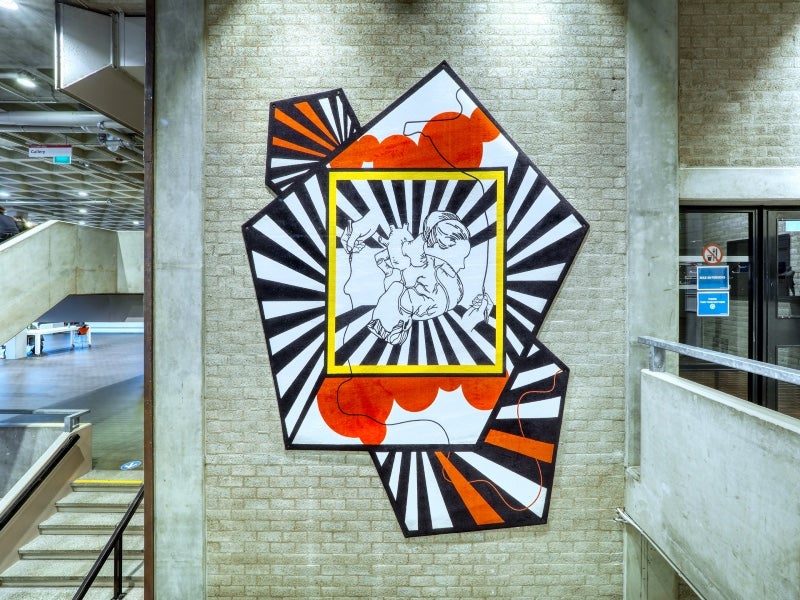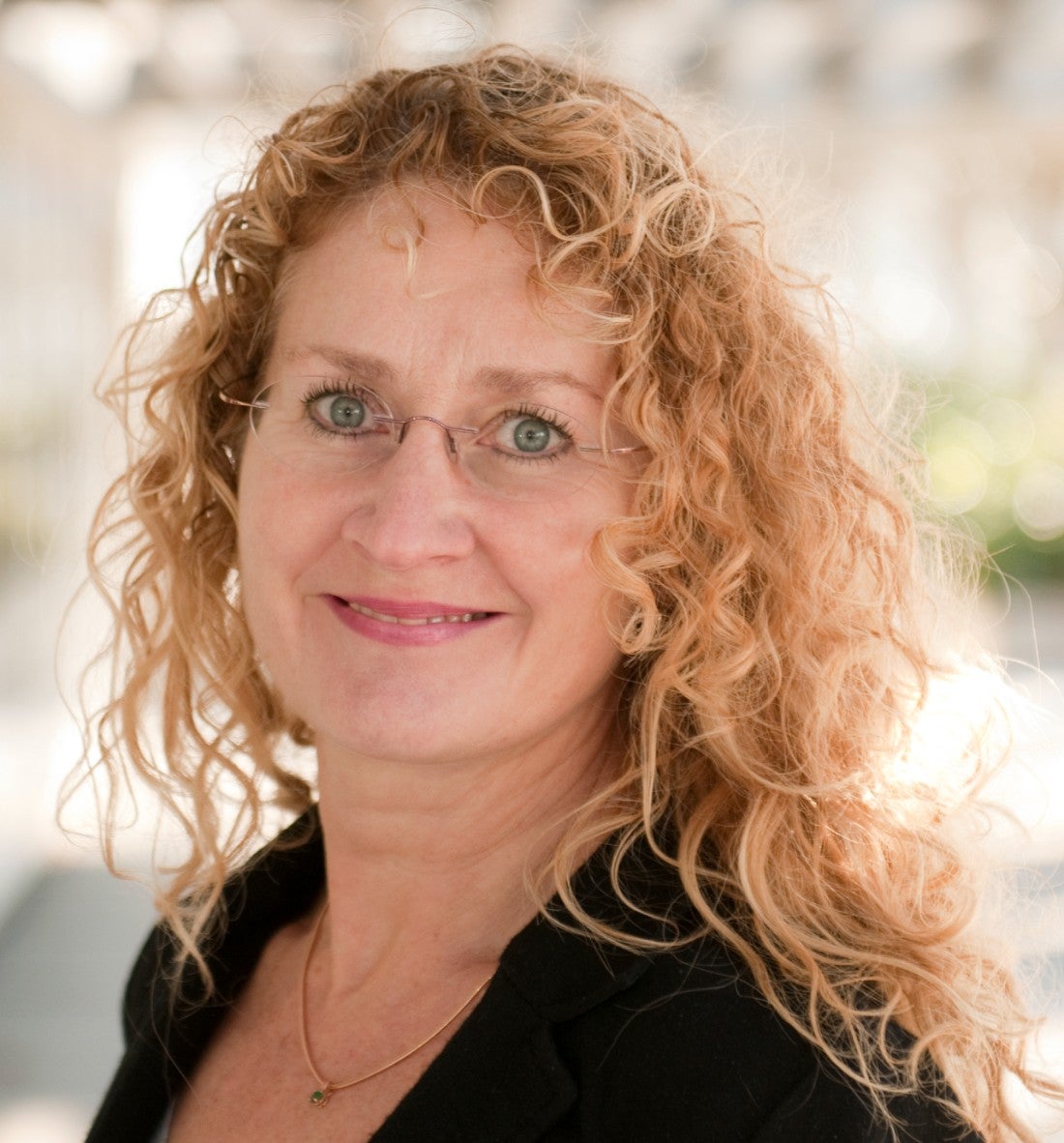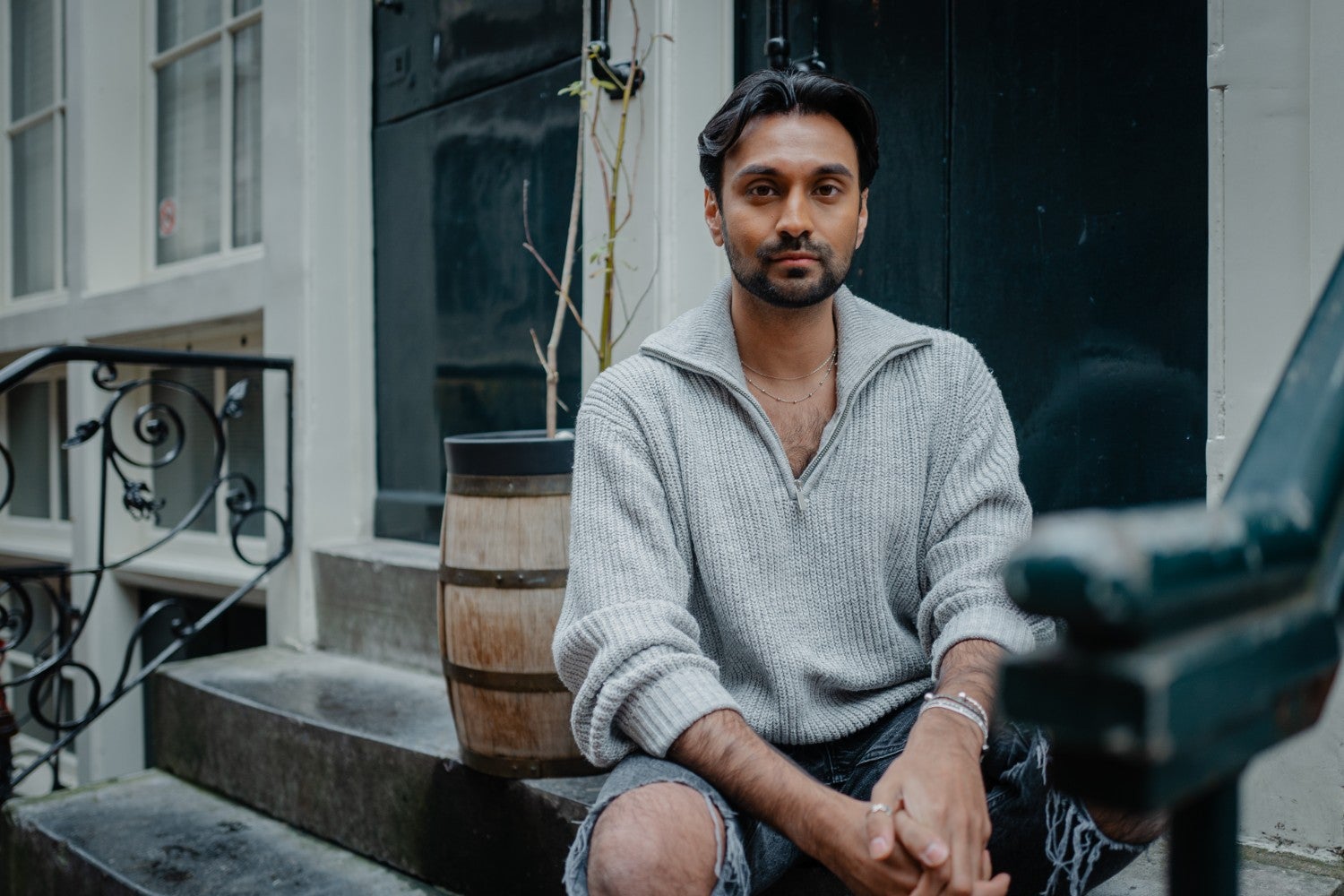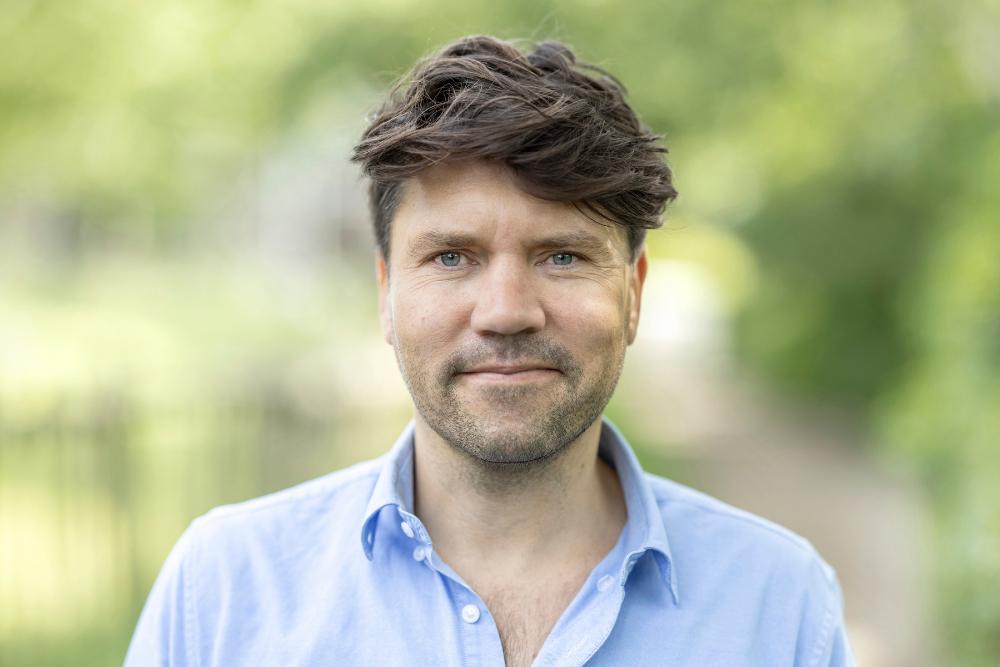It was an honour for artist Wafae Ahalouch to create a work of art in honour of the Abraham Kuyper year. This resulted in the artwork Trinity.
„I’d never made a wall-hanging in this shape and material before, so it was incredibly exciting. And that Queen Maxima accepted a smaller reproduction of the work during the Dies was the cherry on the cake."
Did you have an immediate click with Abraham Kuyper?
„I knew Abraham Kuyper as statesman, but not as philosopher or theologist. That’s why I also delved into VU Amsterdam’s archives. I quickly came across one of his pronouncements: ‘God created a magic connection between the mind, heart and hand’. It really affected me that he mentioned the heart. In my opinion, the mysticism of the heart transcends the religious man that he was."
„During his travels across the world, Kuyper always entered into dialogue with people from different cultures. It didn’t matter whether someone was Christian, Muslim or Jewish. This is an important starting point that I wanted to incorporate, particularly in view of today’s increasingly polarised society."
How did you depict these themes in the work?
„You can read the work in various ways. The societal issues are visible in the elements I used: the heads of a man and woman, a heart, and hand that holds a pen. The themes also recur in the colours. In colour theory, orange stands for spirituality and yellow for energy and God’s light. In the work, yellow is literally a frame for the human relationship that is connected with the heart, knowledge (the head) and science (the written)."

Why did you choose a wall-hanging?
„The instant I saw that huge hall I thought the grey wall needed more than just a painting. That’s why the work became a combination of a wall-hanging and a mural: a tapestry. This links it with my earlier murals, but the rather bombastic tapestry gives the wall something warm and homely."
How does this artwork compare with your previous work?
„The black and white lines in the work refer to the circus I created. This aspect is something I refer to a lot in my works since a residency in Berlin ten years ago. I was in Berlin to research the history of Nazi propaganda and the Hitler Youth. I visited a circus for the first time when I was there and found this to be a rather tragicomic family event. The grandmother was seated at the counter selling tickets, the children took part in the show and the promised lions and tigers appeared to be cows and dogs."
„So much converged in this for me. The circus is mainly for children, but adults are also tempted. I recognised this in Nazi propaganda too. Hitler even gave speeches in a circus tent in Munich. In my work, the circus became a metaphoric stage to broach important societal and political themes. It looks fun and attractive, but in the meantime it’s about issues such as abuse of power and populism."
Do you use such a recurring element to make your work recognisable or also for that continued reference to the circus?
„Both. Aesthetically I think it’s fine but, as far as content is concerned, I also enjoy the stratification of the circus. Something never has just one meaning; everything is subjective. There are multiple meanings in the Trinity work and that corresponds with the forms I used. It is also symbolic for spirituality. We are all souls and our different backgrounds result in stratification in life. But funnily enough, we’re really not that different from each other."
The artwork was realised with Mondriaanfonds support. The Kuyper year is co-financed by the Dr. Abraham Kuyper Fonds and VUvereniging.








